LIVE PROJECTS
Our Project Groups convert plans into action by brainstorming, initiating and successfully implementing work streams. The deliverables range from producing Codes of Practice and Guideline Documents, plus help influence change, data collection, trend analysis and much more. With defined parameters, these groups are actively participated by some of the most knowledgeable and talented people in the industry.
Click below to see more on our current Live Projects. If you wish to join or contribute to any of these groups, please Contact us.
OUR CURRENT PROJECTS
The TSA has been working on this flagship project since 2019 on establishing a reliable proven and recognised test methodology for measuring microbial kill within the wash process. The project completion estimated by January 2022.
In the wake of Covid-19 pandemic, the TSA working with DMU have conducted research to identify the stability of coronaviruses in various fabric types and wash processes. Results published in Q1 2021. Read more..
Our aim is to provide a working solution to the industry and form a platform to explore various opportunities in recycling end of life textiles. Scope of the project include cotton, polycotton and 100% polyester fabric types.
We continue to work with Department of Business, Energy and Industry Strategy (BEIS) to keep the CCA scheme relevant for our industry whilst we explore more options to improve energy efficiency in laundry operaitons. The current scheme targets were agreed at 4.523% following a negotiation process between TSA and BEIS. Read more..
The TSA guidance document outlines the requirements for offering workwear rental services. In light of the changes to PPE Regulations and recent developments around protective equipment in a pandemic, this guide is currently under review. The revised document should be available in Q1 2021.
The TSA have formed a Trailblazer Group to drive the Apprenticeship on behalf of the industry. The Institute for Apprenticeship (IfA) are going ahead reviewing the delivery of Engineering and Manufacturing Apprenticeship standards. The Textile Services Operative standard is under this family of standards. We have emailed our contacts at IfA to report the Covid-19 impact on the industry ahead of the call scheduled with them on 14th December. Our recommendation to them was to allow more time for the industry to get back on its feet before we can commit to a full review of the standard.
During the covid-19 pandemic, the TSA has been engaged with the government bodies initiating a move away from single use gowns to multi-use. The Cabinet Office, NHSI and DHSC recognise that laundry services are central to any multi-use strategy and have committed to continued engagement.
A new project for 2021 will look at the opportunity to support care homes in improving laundering standards within this essential and growing sector. The current inspection of the sector does not review laundry and we believe this needs addressing.
A key document for our industry with global recognition, will be reviewed and published Q1 2021. H&S Steering Group have reviewed the current document. We have now included the report of the 2019 CTW cutting exercise and updates on PPE considerations. The draft has now been circulated to the Steering Group for their comments.
The main objective of this project is to enable laundry services organisations to attract more talented women into senior roles. This is a key topic for our industry, and we hope the working group can help make a long-term change.
- Purpose – To inspire, lead and accelerate the pace of change in the industry through educating and empowering individuals, creating a sense of belonging where everyone can thrive.
- Vision – To change the face of the industry, influencing a more diverse and inclusive approach, where balanced leadership is the new norm.
A desktop research project was initiated to collect data from the membership on varying effluent charges. We have received evaporation rates ranging between 2% to 15% which is a broad scale. Laundry sites with water meters have reported an average of 7.5% evaporation rates (ranging between 5% and 12%). We are now considering a broader approach to this topic and develop an ‘understanding water costs in a laundry’ report which would help place this issue in the overall cost impact. We have noted that some members are hesitant to approach this topic as there is a possibility that they might get charged more by the water companies.
